Impact
The smallness of individual human actions in juxtaposition with vast geological landscapes is a contrast that is at once a feeling of helplessness, but also a recognition of the power of the collective to employ technologies with little realization of the unintended consequences of our actions.
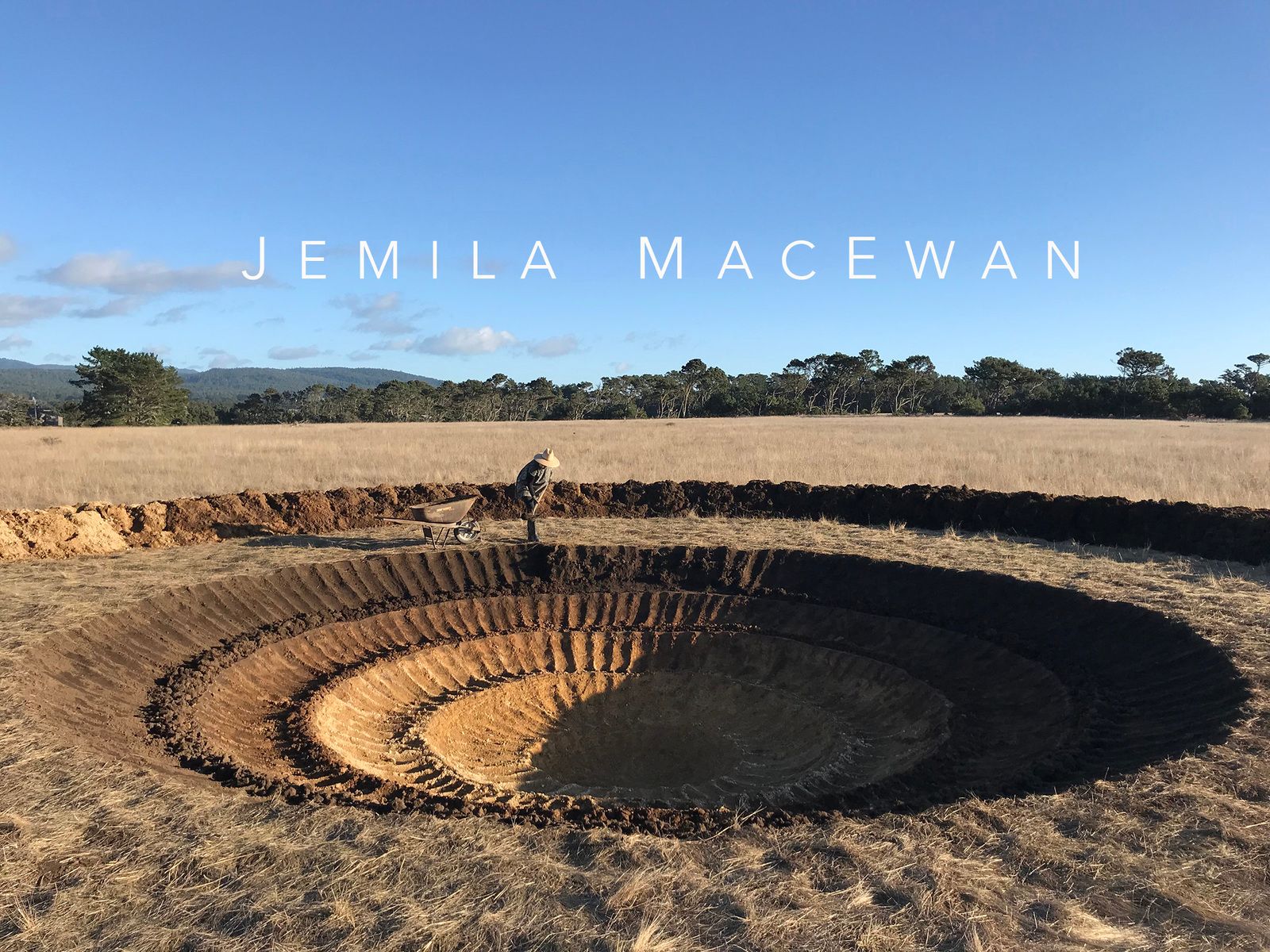
Yesterday morning began with a conversation with another Design Science Studio participant whom I met through the Buckminster Fuller Institute’s Trimtab Space Camp. Rūta is from Lithuania, so we coordinated our meeting to coincide with the end of her day and the beginning of mine.
We have each been selected to participate in the first cohort of the education incubator, a group of 144 individuals who will be divided into twelve pods of 12 people. Limiting the group to 144 people keeps the community within Dunbar’s number, one hundred and fifty individuals.
“At the time, in the nineteen-eighties, the Machiavellian Intelligence Hypothesis (now known as the Social Brain Hypothesis) had just been introduced into anthropological and primatology discourse. It held that primates have large brains because they live in socially complex societies: the larger the group, the larger the brain. Thus, from the size of an animal’s neocortex, the frontal lobe in particular, you could theoretically predict the group size for that animal.”
“Looking at his grooming data, Dunbar made the mental leap to humans. “We also had humans in our data set so it occurred to me to look to see what size group that relationship might predict for humans,” he told me recently. Dunbar did the math, using a ratio of neocortical volume to total brain volume and mean group size, and came up with a number. Judging from the size of an average human brain, the number of people the average person could have in her social group was a hundred and fifty. Anything beyond that would be too complicated to handle at optimal processing levels.”

This morning, I listened to a conversation between Jim Rutt and Douglas Rushkoff, which, incidentally, involved a discussion of Dunbar’s number in the context of a prepper commmunity.

When I was applying to participate, I was wondering how I might be able to contribute. I applied on the day of the deadline after reading the questions and realizing that the project of documenting a community into existence would be applicable. I have had this idea of a renaissance of the Bauhaus school for our postmodern context. In the wake of the failure of modernism to realize its social utopian vision, how might a contemporary reimagining of the school be formed?
My last name, Bau, has attuned me to the impact of the Bauhaus on design pedagogy since I was formally introduced to the influence the school has had on our modern understanding of design. Even the word “modern” is ambiguous because of the way its meaning adapts to each time.
I did not set out to form a community, since I considered such a feat to be beyond the abilities of this particular creative introvert. Rather, I thought to do something similar to another project that I had enjoyed the opportunity of participating in. A group of artists, creators, and innovators had crowdfunded a book to document the work of those who participated.
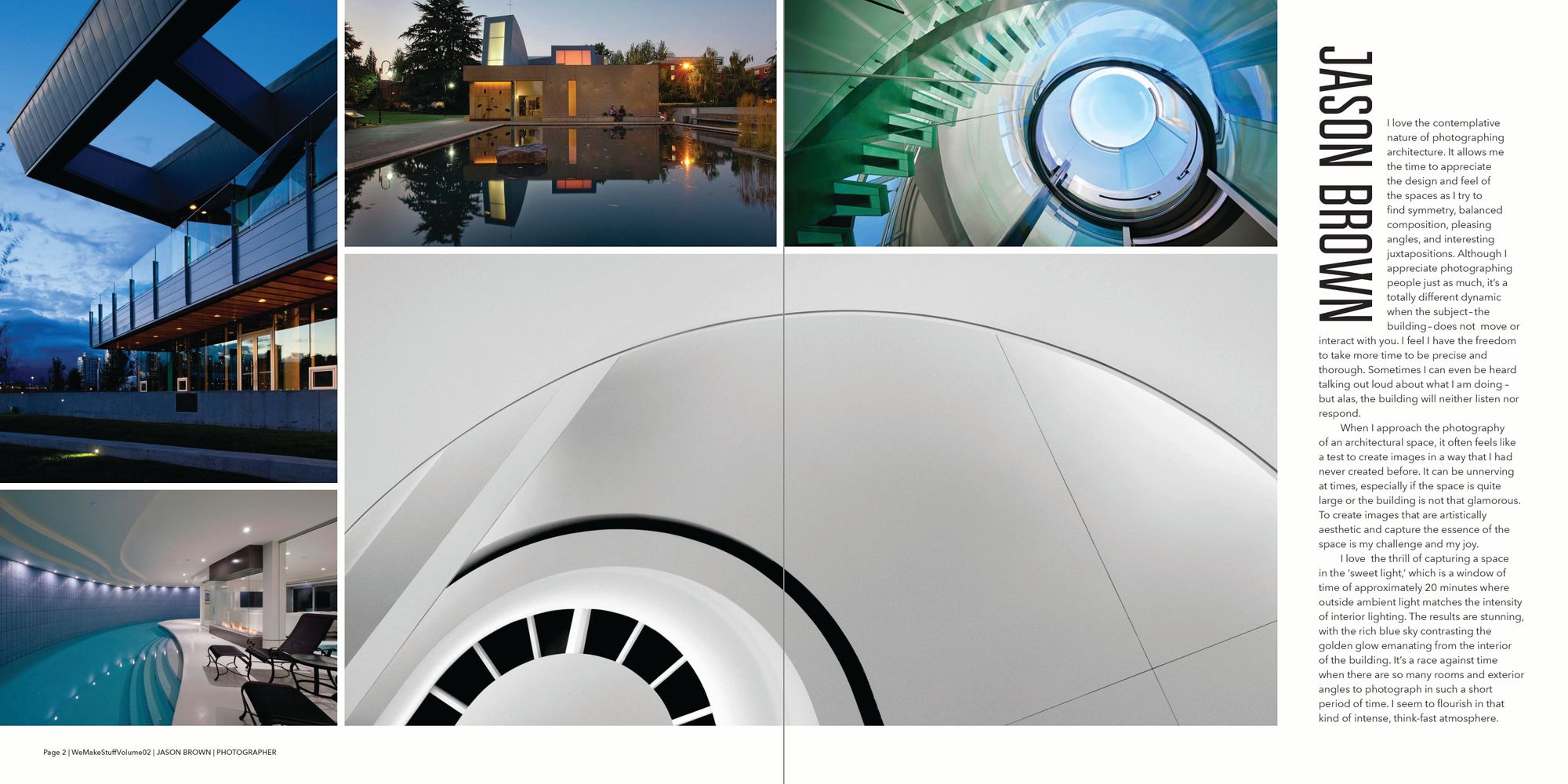
This time, in keeping with my observation of the evolution of design from physical artifacts to living systems, I thought to document the creative, collaborative community that is being formed into a self-organizing learning organization of artists, creators, and innovators. According to Marshall McLuhan, artists are the antennae of the human species. We observe and record our observations.

David Bohm responded to his exile from the community of physicists in the United States of America by reaching beyond the silo of his scientific discipline to engage in dialogue with Krishnamurti. Bohm’s wife recognized that the language of spirituality that Krishnamurti was exploring was surfacing similar ideas about the observer and the observed, a notion which had become the subject of the double-slit experiment in quantum mechanics.
The observer has become the observed
Through a user experience (UX) design research project, I hope to research, document, design, prototype, test, and iterate on the models, processes, tools, and artifacts of the group with a focus on design for resilience, reimagining our social architecture, by exploring how we imagine, design, and build the future together.
We are a builders collective, but we are not building with the same intentionality of the Bauhaus, to better understand our materials to build the physical infrastructure and architecture of the modern world. Instead, we are designing human experience by reimagining our social architecture, the social, economic, cultural, technological, and ecological systems which are sustained by the living universe on which the human species depends for life.
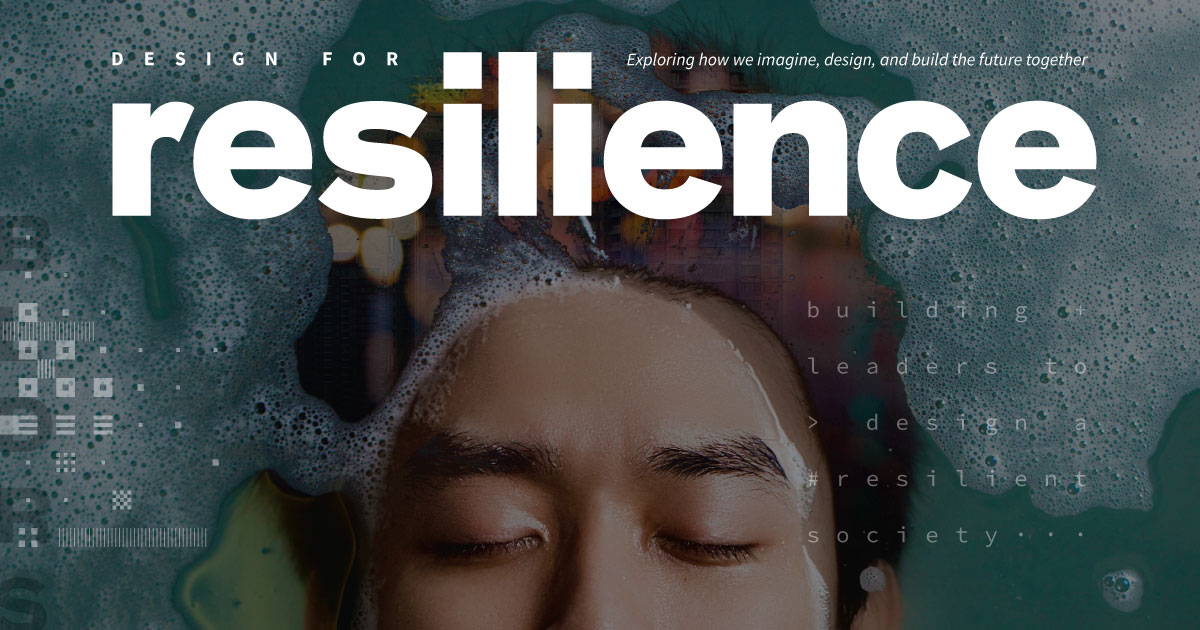
My impact is made through observation. As a designer, I become anonymous in my attempts to be an objective observer representing the identities of those whom I observe. I attempt to understand the constraints of the problem that I define through research and analysis. Then, I propose possible solutions to the problem through exploration of the possibilities within the constraints of desirability, feasibility, and viability. I prototype solutions to discover what works and what doesn’t through the observation of interactions of individuals recruited to participate in usability tests.
Breakout
During the breakout session of the first orientation meeting conducted through Zoom, I met Jemila MacEwan and Colin Vale.
Human Meteorite
Jemila MacEwan embodies the deliberate intentionality and actions required to manifest the impact crater of a human being, created as an endurance performance using hand tools over the duration of one lunar cycle.
Jemila MacEwan – The Wake, 2018
Jemila is an interdisciplinary artist who was born in Scotland, grew up in Australia and is currently living and working in New York city. They joined the Fish Factory for the month of March 2018 to work on a sculpture-based video performance piece. Jemila spent their time in the residency making large teeth/glacier sculptures out of paper mache and then filming a performance with them interacting with them.
Jemila’s work has been greatly affected by their upbringing in Australia, where scientific, mythological and spiritual ways of learning from the land are intertwined. They continue to draw connections between people and place; material and culture; spirituality and experience. Their work seeks out an empathetic approach to humanity’s destructive impulses, and recently they have focused on making art works as a way to understand what it is to be human in the age of the Holocene Extinction.
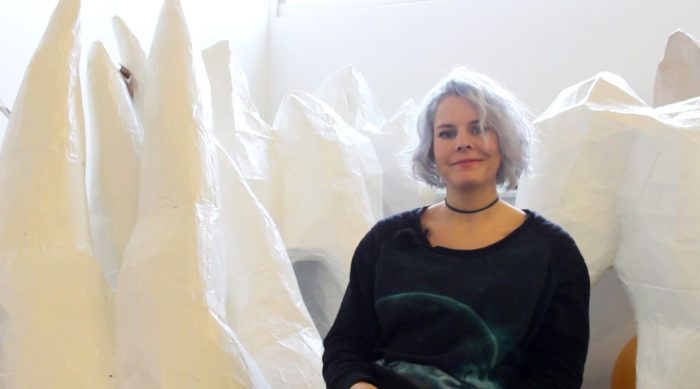
Wallflower
In high school, the strangeness of our family was an identity that I embodied through a detached social isolation, feeling alien to the surrounding culture as a biracial child masquerading in a white body. White supremacy was a cultural context that drove a competition for GPA in the same way that we now compete as nations for GDP.
I participated in a handful of social gatherings as an observer, reticent and socially awkward. I have thought of myself as a fly on the wall.
Now that role has changed. I observe to reflect my experience as a designer back to the students of Designlab through the interaction of a dialogue over video chats. The work of remote learning is something that I have been engaged in for most of my life. The sense of social isolation is a condition of late capitalism that I have been conditioned to accept as normal.
Amanda Joy Ravenhill remarked of the influence of Braiding Sweetgrass, a book by Robin Wall Kimmerer.

The grammar of animacy
Robin Wall Kimmerer refers to attention as a doorway to gratitude.
Yes. This comes back to what I think of as the innocent or childlike way of knowing. Actually, that’s a terrible thing to call it. We say it’s an innocent way of knowing, and, in fact, it’s a very worldly and wise way of knowing. That kind of deep attention that we pay as children is something that I cherish, that I think we all can cherish and reclaim, because attention is that doorway to gratitude, the doorway to wonder, the doorway to reciprocity. And it worries me greatly that today’s children can recognize 100 corporate logos and fewer than ten plants. That means they’re not paying attention.
How can we listen as well as we know how to see?
What I mean when I say that “science polishes the gift of seeing” brings us to an intense kind of attention that science allows us to bring to the natural world, and that kind of attention also includes ways of seeing, quite literally, through other lenses — that we might have the hand lens, the magnifying glass in our hands that allows us to look at that moss with an acuity that the human eye doesn’t have so we see more. The microscope that lets us see the gorgeous architecture by which it’s put together, the scientific instrumentation in the laboratory that would allow us to look at the miraculous way that water interacts with cellulose, let’s say. That’s what I mean by “science polishes our ability to see” — it extends our eyes into other realms. But we’re, in many cases, looking at the surface. And by the surface, I mean the material being alone.
But in Indigenous ways of knowing, we say that we know a thing when we know it not only with our physical senses, with our intellect, but also when we engage our intuitive ways of knowing, of emotional knowledge and spiritual knowledge. And that’s really what I mean by listening. By seeing that traditional knowledge engages us in listening. And what is the story that that being might share with us if we know how to listen as well as we know how to see?
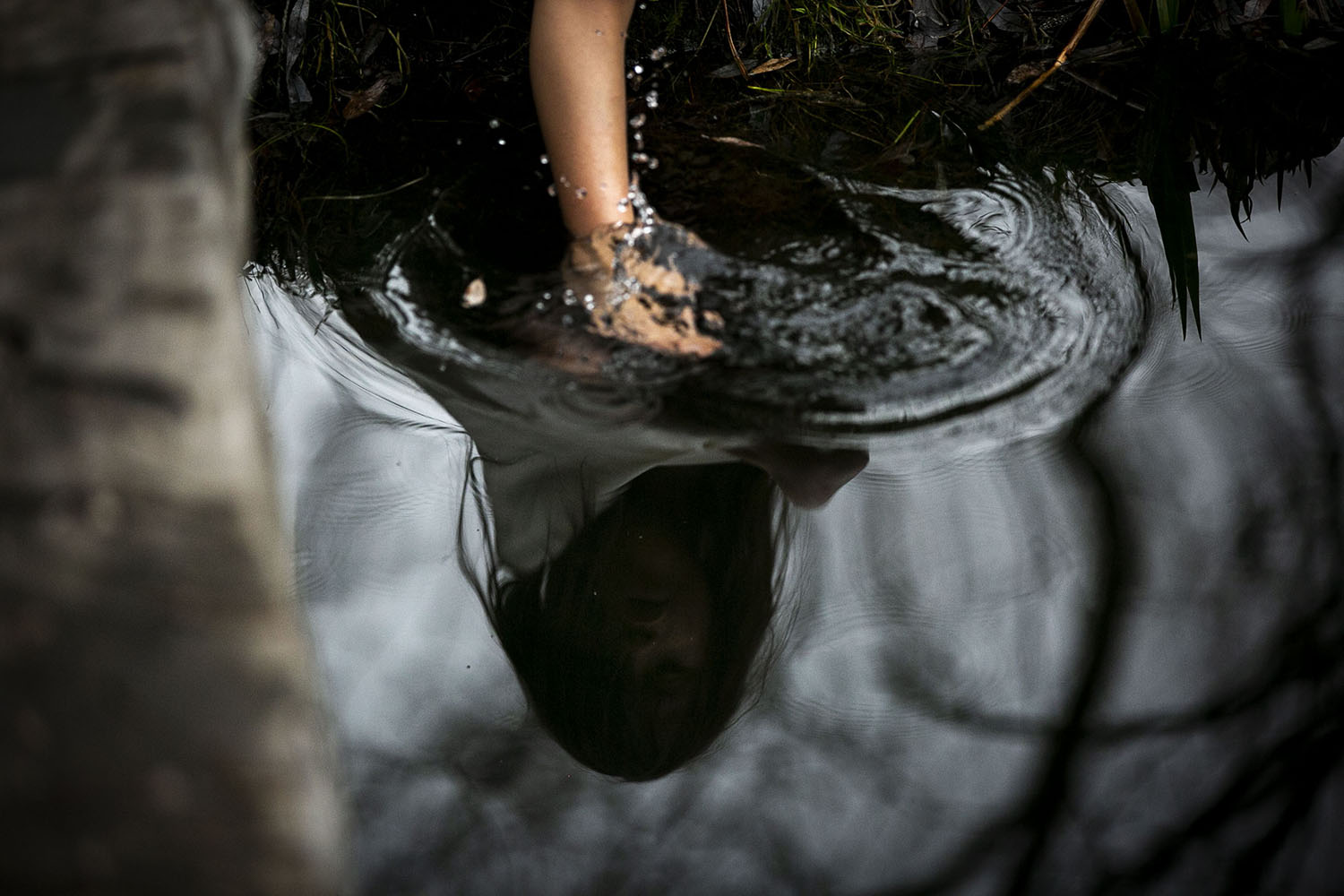
Embodied Attention and Empathy
Jemila MacEwan draws our attention to the voice of the Earth embodied in the air that became encased in the sculptures of wisdom teeth that could float like icebergs, but could also represent ancestral wisdom that has been surgically extracted, removing them from the collective memory. Perhaps they could even be traded by sleeping with them to find them magically replaced by cold hard cash. Instead, they speak of the loss of memory, melting glaciers, erasing the histories of the past, the record of the air, like layers of enamel encasing the sensitive nerves of these protrusions of bones in the mandibles of human beings.
Jemila MacEwan calls into question the attempts of the human species to be able to pay attention to the voice of a child, attempting to recall the latent memories of the earth, disappearing like childhood innocence in the wake of adulthood.
We awake to attend the funeral of so many species, caught in the wake of the desperation and greed that drives human beings, only now just awakening to the impacted wisdom teeth that the smaller, modern skulls no longer have room for.
Focused attention allows empathy by sitting in the pain of the impact crater left by the extraction of earth from the once fertile and living soil. Human activity, when it stops, allows for life to resume, as it spreads across the exposed earth, a process of regeneration that occurs naturally when the disruption of the earth’s biological processes ceases.
We have privileged certain types of knowledge. We learn about moss instead of learning from moss. We consider human life as the pinnacle of the created order, yet we are dependent on the life of algae for the oxygen we breathe and lack the ability to photosynthesize.
Jemila MacEwan spoke of a lack of belief in the human ability to reverse the damage already caused by their activities. The Holocene Extinction is a recognition of the death cult of modern ways of life that refuse to acknowledge the problem of maintaining the status quo at the expense of the living systems of the planet.
Her participation in the Design Science Decade is a paradox, given the faith of Buckminster Fuller in our ability to employ available technologies to create regenerative living systems.
I am here not only to observe, but also to fully participate in our efforts to acknowledge our reality and to fully live into it, with the intention to create a world that works for 100% of life.
The chance encounters of human interaction in complex networks of agency have the ability to surface ideas that may have been otherwise forever submerged.
By drawing attention to the work of Jemila MacEwan, I appreciate the intention, focus, perseverance, labour, intensity, and empathy of another human being making sense of their environment and processing the reality of this moment. The smallness of individual human actions in juxtaposition with vast geological landscapes is a contrast that is at once a feeling of helplessness, but also a recognition of the power of the collective to employ technologies with little realization of the unintended consequences of our actions.
By participating in the performance of Jemila MacEwan, I bear witness to the changes in my own awareness of my perceptions of my personal perspective and role as an observer.
The impact of our collective work is yet to be fully realized. Writing is a form of observation in order to offer these observations for the observation of others.
The observer has become the observed.





